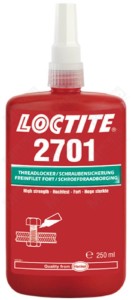 Search
Search
 Producers
Producers
 Login
Login
 Browsing options
Browsing options
Aviation lubricants are specialized products used in the aerospace industry to ensure proper functioning and protection of various mechanical components of aircraft, helicopters and other aircraft. Due to the high requirements placed on lubricants in aviation, such lubricants must have specific properties that differ from those used in other industries.
 Mobilgrease 28 aynthetic aerospace grease extreme conditions, oxidation, thermal stability, anti-wear, material compatibility
Mobilgrease 28 aynthetic aerospace grease extreme conditions, oxidation, thermal stability, anti-wear, material compatibility
Aviation lubricants are specialized products used in the aviation industry, designed to ensure the proper functioning and protection of various mechanical elements of aircraft, helicopters and other aircraft. Due to the high requirements placed on lubricants in aviation, such lubricants must have specific properties that differ from those used in other industries.
Properties of aviation lubricants:
- Resistance to extreme temperature conditions: Aerospace lubricants must exhibit good thermal stability and resistance to low temperatures, as aircraft can encounter both very high and very low temperatures during flight.
- Oxidation resistance: Due to prolonged exposure to high temperatures and oxidative stress, aviation lubricants must resist oxidation processes that can lead to deterioration of their lubricating properties.
- Good coefficient of friction: Aerospace lubricants must provide a low coefficient of friction to reduce wear and increase the life of mechanical components.
- Strengthability: Aviation lubricants must be able to withstand heavy loads, such as those encountered during take-off and landing, as well as during flight maneuvers.
- Compatibility with materials: Aerospace lubricants must be compatible with a wide range of materials used in the aerospace industry, such as metals, plastics and seals.
Aviation lubricant applications:
- Engines: Aviation lubricants are used to lubricate jet and piston engines, reducers, air compressors, bearings and other moving parts.
- Chassis: Lubricants are used to lubricate chassis components such as suspension, wheels, brakes, and steering mechanisms.
- Hydraulic systems: Aviation lubricants are used in aircraft hydraulic systems such as wing mechanisms, flaps and ailerons.
- Control systems: Lubricants are used to lubricate flight control system components such as gears, bearings, and other moving parts.
- Transmission: Aerospace lubricants are used in transmissions, bearings and other transmission components such as shafts, clutches and propeller gears in helicopters.
-
Gear Lubrication: Aviation lubricants are used to lubricate main and auxiliary gears, especially in helicopters, where they are critical to the proper operation of the rotating mechanisms.
-
Compartment components: Aviation lubricants are used to lubricate hinges, seat guides, door mechanisms and other moving components inside the passenger compartment.
-
Onboard Lubrication Systems: Aviation lubricants are used in onboard lubrication systems that automatically lubricate critical aircraft components during flight, ensuring proper operation and long component life.
-
Antenna and Radar Lubrication: Aviation lubricants are used to lubricate antennas, radars and other communications equipment on board aircraft that require proper operation and corrosion protection.
-
Corrosion protection: Aerospace lubricants can also play a protective role by preventing corrosion of mechanical and metal components that are exposed to moisture, salt and other aggressive environmental factors.
 Currency
Currency

 Loctite Henkel Premium Partner
Loctite Henkel Premium Partner Free delivery from 600 EURO to EU Countries*
Free delivery from 600 EURO to EU Countries*  33 851 46 01
33 851 46 01



















